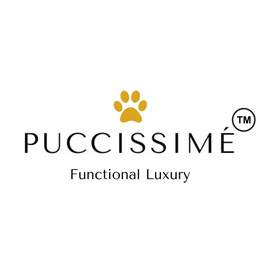How Often to Wash a Dog's Paws After a Walk
As a dog owner, you probably know how essential it is to keep your pup clean, especially after outdoor adventures. Whether it's a walk through city streets, a romp in the park, or a snowy sidewalk stroll, your dog’s paws pick up dirt, bacteria, and harmful substances. At first glance, you might think their paws are pretty clean, but under a microscope, you’d see a lot of dirt—dirt that can quickly end up on your bed or sofa.
Let's explore how often you should wash your furry friend's paws and the best methods to keep them fresh and healthy.
How to Wash Your Dog’s Paws After a Walk
The water for washing should be warm, around 30–35°C. Hot water can damage the delicate skin on the pads, while cold water may cause discomfort.
Some dog owners use shampoo to wash their dog’s paws, but it is not always necessary—plain water is enough if the paws are not too dirty. However, if your dog has walked through mud, snow with de-icing chemicals, or other heavy dirt, it is best to use a special pet shampoo or hypoallergenic soap that does not dry out the skin.
It is important to avoid human soap, antibacterial agents, and perfumed products, as they can cause irritation.
After washing, the paws should be dried thoroughly—a soft towel will help remove excess moisture, and for long-haired dogs, a hairdryer on the lowest temperature setting can be used. Drying the paws is especially important in winter to prevent frostbite.
Additional care includes checking the pads for cracks and cuts and, during cold seasons, applying protective waxes or creams.
How Often Should You Wash Your Dog’s Paws?
The frequency of washing depends on your dog’s activities and the season:
Daily Walks in Urban Areas: If your dog walks on city streets, wash their paws after every outing to remove dirt, chemicals, and bacteria.
Winter and Rainy Seasons: During snowy months, frequent washing prevents salt and ice buildup. In rainy weather, it helps remove mud and bacteria.
Hiking and Park Visits: After off-road adventures, a thorough rinse is essential to remove mud, grass, and insects.
Occasional Quick Cleans: If the walk was short and on a clean surface, wiping with a damp cloth or paw wipes may be enough.
How to Teach a Dog to Wash Its Paws Calmly
It's best to teach your dog to wash its paws from a young age. Be patient and gentle so that your dog doesn’t feel afraid and instead enjoys the process.
Start by gradually getting your dog used to having its paw handled—gently lift and lower one paw at a time to show that there’s nothing to be afraid of. To make the experience pleasant, reinforce the desired behaviour with praise and treats. Over time, your dog will understand and cooperate willingly.
If your four-legged friend resists paw washing, try to distract them. If they seem uncomfortable, redirect their attention with a treat, toy, or soothing voice.
It’s also important to establish a designated washing area, so your dog knows what to expect and feels at ease. If your dog is afraid of the bathroom, start by washing its paws in the sink. Once it becomes comfortable, you can gradually transition to the bathtub.
Summary
Washing your dog's paws after walks is an essential part of pet hygiene, especially in Canada’s changing weather conditions. It prevents exposure to harmful chemicals, reduces allergens, and keeps your home cleaner. However, avoiding common mistakes—such as using the wrong water temperature, skipping between the paw pads, not drying properly, and using harsh soaps—will make paw care more effective and comfortable for your furry friend.
By keeping your dog’s paws clean the right way, you’re ensuring their comfort, health, and happiness—one step at a time!


Leave a comment